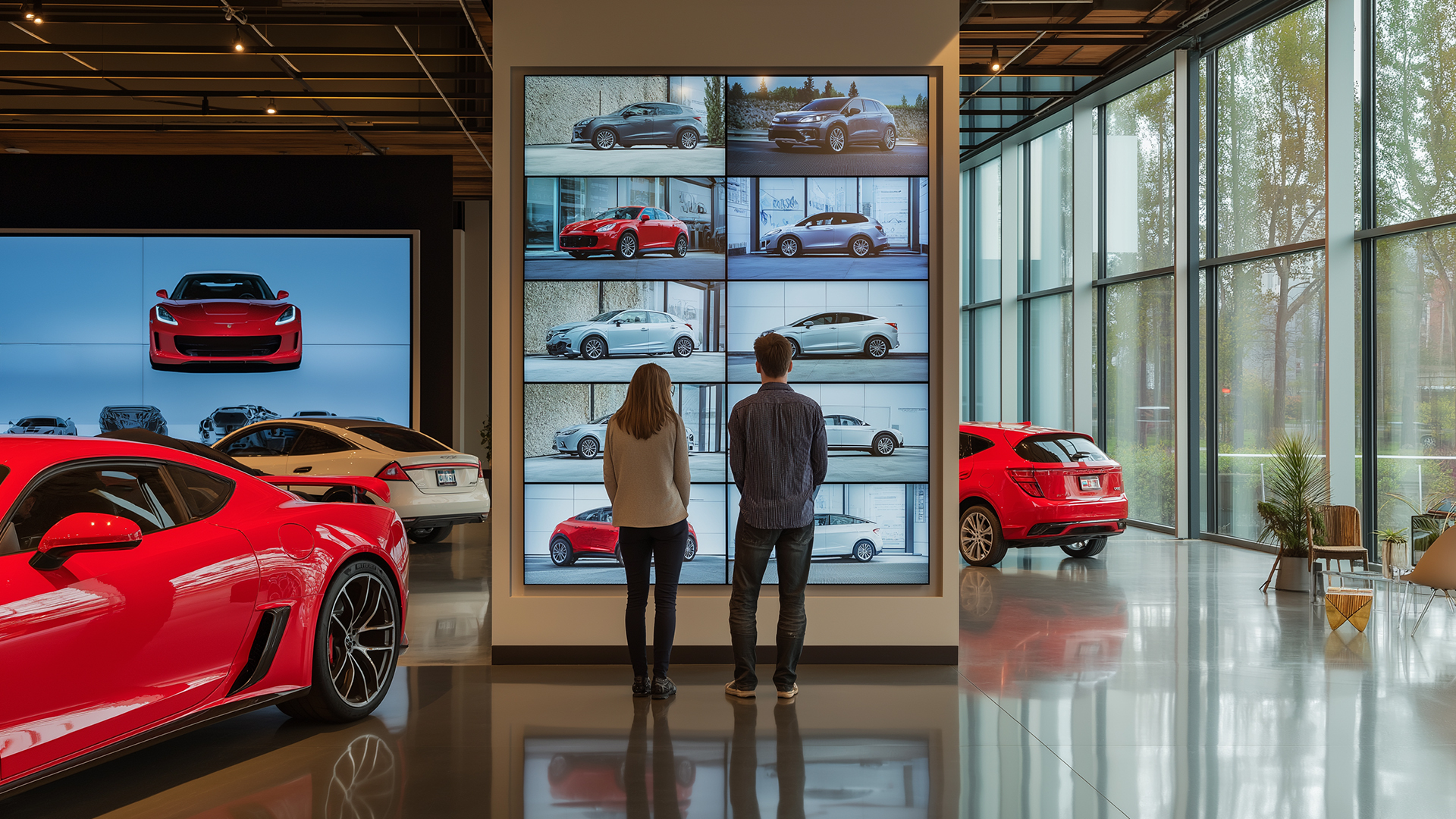The automotive industry is accelerating fast, and staying ahead means navigating this shift with deep market understanding and strong partnerships. Joining us is David del Pino, Expansion Manager at Seez, who brings extensive experience in automotive market expansion and partner collaboration. David shares his unique perspective on how dealerships and OEMs are adapting to new digital realities, balancing customer experience with profitability, and embracing AI-driven solutions and strategies.
Part 1: Understanding International Market Clients
From your experience, how do clients perceive the role of AI today: more of a ‘nice to have’ or a ‘must-have’? And has that perception ever shifted after they actually saw Seezar in action?
Clients used to see AI as more of a “nice to have.” In the early days, we had to spend a lot of time explaining what AI actually does and why it matters for dealerships. Many didn’t fully understand how it could benefit their business. That mindset has changed a lot in the past year. Now, most clients come in already recognizing the value of AI. They’re not just curious, but they’re actively looking for solutions. For many, it’s become a must-have, and they’re thinking beyond just one tool. They want AI that can support different parts of their business, from sales to customer support.
And yes, their perception definitely shifts when they see Seezar in action. They’re often surprised by how practical and tailored it is. It’s not just about answering questions, it’s about showing real-time inventory, understanding a customer’s lifestyle, and recommending cars that truly fit their needs. That’s when they realize the impact AI can have. Seeing it in action also changes how they think about the customer experience overall. They have started to understand that AI can improve how they engage with customers, not just by making things faster but also by making them smarter. Of course, to really get the most out of it, we work closely with them. We guide them on how to use Seezar effectively and help them make the right changes to get the best results.
What are some top features clients have asked for and that we’ve built into Seezar, especially any that came directly from user feedback?
One of the most common questions we hear is, “What’s on the roadmap?” and one of the top requests has been faster response times, and we’re happy to share that it’s already live. We’ve upgraded Seezar’s LLM to process large inventories and customer data more efficiently, delivering quicker, more natural, and conversational replies. Another frequent request is multichannel support. Clients want to use Seezar not only on their website but also on WhatsApp, SMS, email, and other platforms. We’re close to rolling this out, which will let dealerships reach customers on the channels they prefer.
We’ve also built an analytics dashboard based on client input. This lets them track chat activity and see which cars are getting the most attention, helping them make smarter sourcing and sales decisions without needing to wait for reports. Additionally, clients wanted better communication from Seezar during chats. Now the AI shows when it’s fetching information or processing data, which helps customers feel informed and builds trust. We focus on what our customers really need and keep improving Seezar based on their feedback. It’s all about making the experience better, one update at a time.
Part 2: Sales Conversations & Approaches
When you’re pitching Seezar to a new market, how do you tailor your sales approach to fit that region’s specific needs or mindset?
When introducing Seezar to new markets, the core features stay the same, but our sales approach changes to fit the local market’s unique challenges and mindset. For example, in Germany, the labor market is tight, and dealerships struggle to find and train new staff quickly. So, we focus on how Seezar’s AI chat solution can reduce the number of simple customer questions, easing the pressure on staff and saving time and resources.
We also tailor how Seezar is used. Some markets, like Germany, prefer the chat to cover after-hours support only because their large teams handle most inquiries during business hours whereas in the GCC for instance they value integrations a bit more. Understanding these local preferences helps us position Seezar in the most relevant way.
Working closely with local partners is crucial since they know the market better and help us anticipate challenges before pitching. We also make sure to show real-life use cases from similar markets, which helps clients relate to the solution. Finally, Seezar supports multiple languages, making it easier to adapt to different regions. Although training the AI on language dialects can be a challenge, we continuously work on.
Have you seen any resistance or skepticism when pitching our AI solutions in international markets? How do you usually overcome that?
Yes, we do encounter skepticism when pitching Seezar in international markets. Much of this comes down to confidence; customers want to feel assured that our solution is fully ready for their specific market, especially regarding language support. If their language isn’t yet supported or the product isn’t live locally, they often hesitate to commit.
The biggest challenge is securing the first customer in a new market. Once we have that initial client, it becomes easier to build trust because other dealers can see the solution working in their own market and hear positive feedback firsthand. To overcome resistance, we focus on hiring local experts who already have strong relationships and trust within the market. Meeting prospects face-to-face at local events also helps accelerate trust and decisions. We also invest in PR efforts in local languages so potential customers can easily find information about us, which adds credibility.
We emphasize building genuine relationships by supporting customers beyond just selling them the product. Being transparent about market readiness, like advising if their website or ecosystem isn’t fully prepared, helps us maintain honesty and manage expectations.
In digital, there’s a lot of “let’s try this,” “let’s test that,” and that mindset is essential for any company today, especially with so many new players entering the market and moving fast. Speed has become key. If you look at Dubai, for example, you get things done on the fly, sometimes even faster than in countries we consider advanced. Consumers in the UAE are used to that level of service, with companies like Amazon setting the bar, so speed combined with a great experience is now non-negotiable.
At the same time, people still want to feel taken care of by humans, we’re all human at the end of the day, and that emotional connection matters. Another big shift is that customers no longer have the patience to repeat themselves. What really creates a “wow” experience is when your systems can predict the next best action, and that only comes when you have the right data in place and can truly understand the customer journey.
Part 3: Impact of Partners in Global Markets
Different markets have different buying behaviors. How have strategic partners helped us localize Seezar’s value proposition in ways we couldn’t have done alone?
Strategic partners significantly speed up our go-to-market strategy because they already have established confidence and pipelines with dealers. This means it’s easier to upsell to existing customers than to find new ones, which helps us grow faster. For example, in Mexico, we’ve capitalized quickly on these partnerships to gain traction.
Partners also help us prepare for market launches well in advance by providing insights into local behaviors and customer needs. This early understanding lets us tailor the solution better rather than waiting until after pitching. Additionally, partners often have larger teams handling key account management, so they gather ongoing customer feedback that we can incorporate into our product roadmap.
A great example is how success with Seezar at one dealership often leads to rollouts across multiple websites within large dealer groups, sometimes even across different markets. Because these dealer groups and associations already have strong local relationships built over time, partners open doors that would otherwise be difficult for us to access on our own.
How do we make sure partners stay aligned with the evolution of Seezar, especially as we roll out new features or shift positioning in different markets?
To make sure our partners stay aligned with Seezar’s evolution, we prioritize staying extremely close to them. And not just at a high level: we engage directly with individual teams across each market because every market hears different feedback from customers and has different expectations. That’s why I personally hold weekly calls with every partner team in every region. Yes, it’s a lot of time zones and coordination, but it’s crucial. These calls aren’t just about operations or onboarding; they’re where we share pipeline updates, commercial opportunities, and really build trust. It’s about creating that open space where they feel comfortable enough to just pick up the phone and call us whenever they need.
On top of that, we also have regular high-level catch-ups to align on bigger picture objectives, forecasts, and upcoming plans. But equally important is building processes together. A system that works well for one team or market might not work in another. So we try to co-create workflows for updating bots, changing content, or handling specific tasks that make sense for both sides. And honestly, it’s not just about markets; it can be dealer-specific or even partner-specific. That’s why we lean into our culture of being always available and ready to jump in when needed. It’s this hands-on, flexible approach that really keeps everyone aligned and moving forward together.
Part 4: Market Expansion & Trends
Is there a particular market or country where Seezar’s impact has been especially strong or unique? Do you think cultural or regional factors contributed to that success?
While the impact of Seezar has been relatively consistent across markets in terms of results, the UK stands out as a market that was especially ready to adopt AI solutions early on. The openness of UK dealerships to embrace new technology and their clearer understanding of AI’s business value helped Seezar gain traction there more quickly. In other regions, the impact is still strong but shaped by local priorities. Some markets focus more on lead generation, while others prioritize improving after-hours customer service. So while cultural and regional factors don’t necessarily affect the overall effectiveness of Seezar, they do influence how the solution is perceived and what features are valued most.
In your opinion, what makes a market or even a dealership ‘ready’ for an AI solution like Seezar?
The UK automotive industry has historically been more digital compared to other markets. They were early adopters of digital platforms like AutoTrader and others, which made dealerships more used to digitizing their business and investing in digital solutions. Other European markets tended to follow the UK’s lead, and now digital adoption has become more standard across Europe. One key factor is that the automotive industry worldwide is largely influenced by a limited number of manufacturers (OEMs). Their global processes affect how dealerships operate everywhere. This can sometimes create friction or bureaucracy, which slows down how quickly new digital technologies get adopted.
In Europe, recent challenges like the rise of electric vehicles, competition from new players, and uncertain tariffs have pushed dealerships to rethink their strategies. Many smaller dealers have merged into bigger groups, giving them more influence to negotiate and make decisions independently from manufacturers. This has made them more strategic and more eager to embrace digital tools to stay competitive. For example, beyond Seezar, some large dealerships have implemented e-commerce solutions for used cars to increase profitability, since used cars often have better margins than new cars. The need to improve revenue streams and survive financially is pushing dealerships to become more digitally advanced and make smarter decisions overall.
What trends are you seeing in the global automotive space that align with where Seezar is headed?
From my experience, especially at Audi in after-sales, the rise of EVs has pushed the industry to find new revenue streams because margins are changing. Dealerships need to differentiate themselves by offering a better customer experience, both online and in person.
Customers now want easy digital options, like booking service appointments online whenever they want, instead of calling during working hours. Those who offer smoother experiences will have an advantage. Connected cars and shared ecosystems also play a role in improving customer experience by allowing better communication between the car and the dealership.
The challenge dealers face is balancing a great customer experience with making profits. Many want to use AI but need guidance on where and how to implement it effectively. The goal is to retain customers for the long term, even when their cars are 10 or 15 years old, because retaining customers is where real value and revenue come from.
David’s final ‘brake’ down:
Having worked closely with partners across different markets, I’ve learned that a market’s readiness for AI solutions like Seezar depends a lot on how digitally mature and open they are to innovation. The UK, for example, was quicker to adopt these tools because they had already invested in digital solutions. But beyond technology, building strong relationships with partners and understanding their unique needs in each market is crucial. The automotive industry is moving toward delivering smoother, more connected customer experiences, and digital tools play a big role in that. Seezar helps dealerships stay ahead in a very demanding market by combining smart technology with real collaboration and 24/7 support, so customers always get a smooth, stress-free experience, anytime they need it at the showroom or online.



